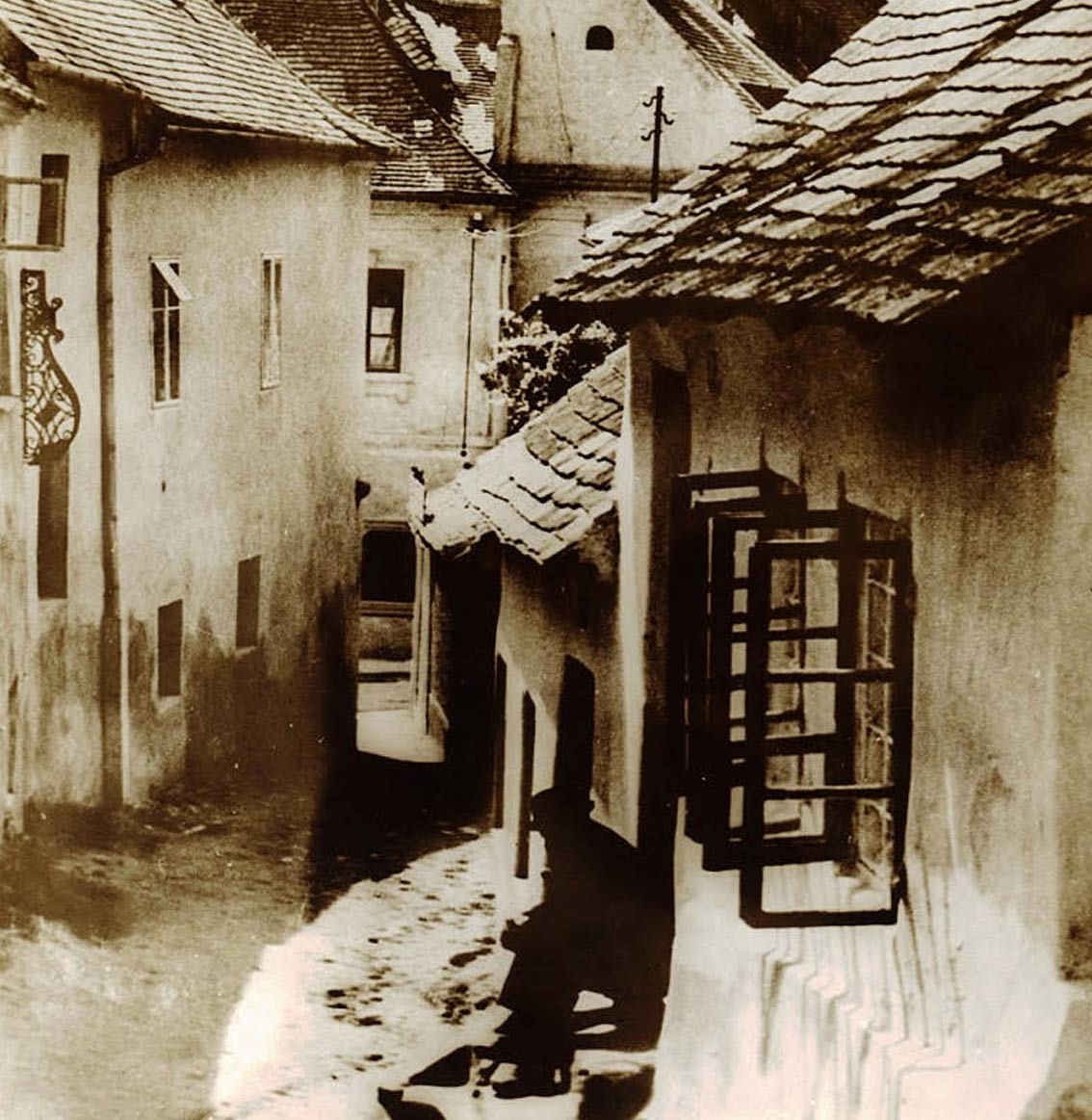
THE HOUSE HISTORY
The house core/structure combines renaissance and baroque architecture and based of written records it was built and inhabited already in the second half of the 16th century. In 1791 it was allocated with a street number “IC” (99 in Roman numerals) and the street was called Quergasse.
Further mentions are from two detailed Mikulov street maps from 1824 and 1856 where it is already depicted in a ground plan virtually in an existing shape including the small yard barn.
Within the process renumbering of the Mikulov Jewish quarter/ghetto in 1923 the house was given a new street number 1162. The whole town was allocated with a unified set of street and houses numbers, because up until then the Jewish and Cristian quarters were numbered separately.
The house was partially damaged during the great fire of Mikulov Jewish quarter in 1926, but subsequently renovated.
According to the Heimatbuch from 1936, a sort of a parish register, the inhabitants were local barber Robert Eisen, lathe operator Leopold Elsinger, proprietor Johann Elsinger and workwoman Antonia Lanza.
Shortly before the break of the WW II the entire Jewish community moved out and after the war vast majority of the native Germans and Austrians were expelled. The Quergasse street was renamed in 1945 and became Alfons Mucha street instead. Later in 1962 the house was allocated a new number (300/13) yet again, this time for good. The write records state Leopold Elsinger and subsequently Antonie Elsinger as the owners.
The current owner bought the house in 2012 from the original Spanish owner Maria Luisa Uribe and had the house reconstructed through 2014-2017.
The house is preserved as a cultural and historic building by the National Historic Preservation Act


HISTORY OF THE JEWISH QUARTER
The history of Jews in Mikulov and the town´s Jewish quarter extends to the period after 1421 when they were expelled from Vienna and Lower Austria by the Albert V, Archduke of Austria. The ghetto grew even bigger after more Jews were expelled from the Moravian Royal Towns Brno and Znojmo.
The Jews settled in the street Za Hradem (behind and/or under the castle). At first they settled next to the Cristian houses, but later they were able to buy them out and form their own quarter
In 1591 Karl Maximilian, Prince of Dietrichstein allowed them their own administration with a Magistrate and other municipal rights and privileges.
In 1612 they are granted the right to trade Mikulov wine by the Cardinal Franz Seraph von Dietrichstein.
Gradually the Mikulov Jewish quarter became one of the most influential in Moravia signified by the seat of the regional rabbi of Moravia up until 1851. For more than 300 years, from the half of the 16th century to the half of the 19th, Mikulov became a cultural and political centre of Moravian Jewry.
After signing the Munich Agreement in 1938 the whole Mikulov area (the Sudetenland) was administrated by the Nazi Germany. As a consequence the vast majority of Jewish, as well as Czech, citizens left Mikulov. After the war some 40 surviving Jews returned back, but they were not welcomed, because of their German and/or Austrian ancestry and literally all of them emigrated from the Czechoslovakia. Thus actually ending the rich history and traditions of Jewish Mikulov once called the Star of Israel.



